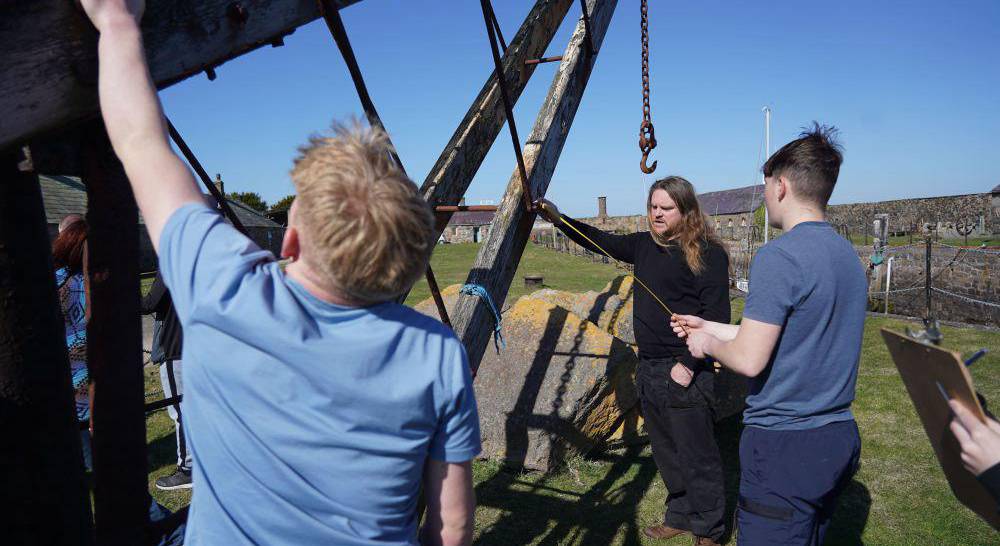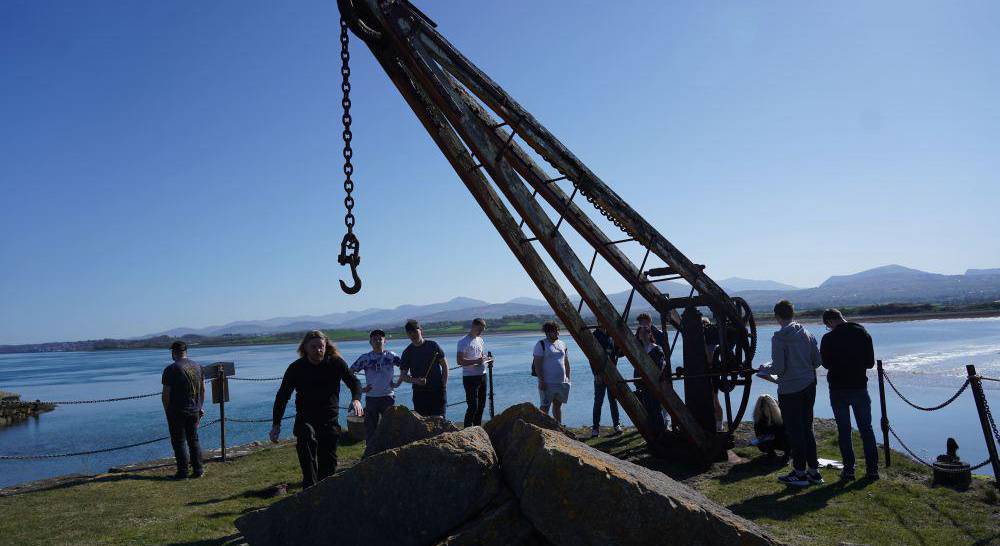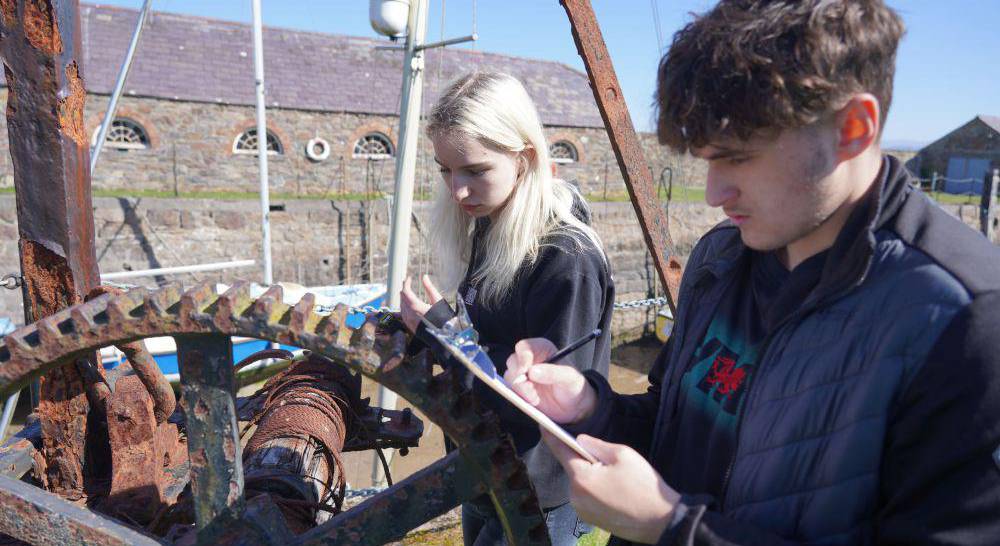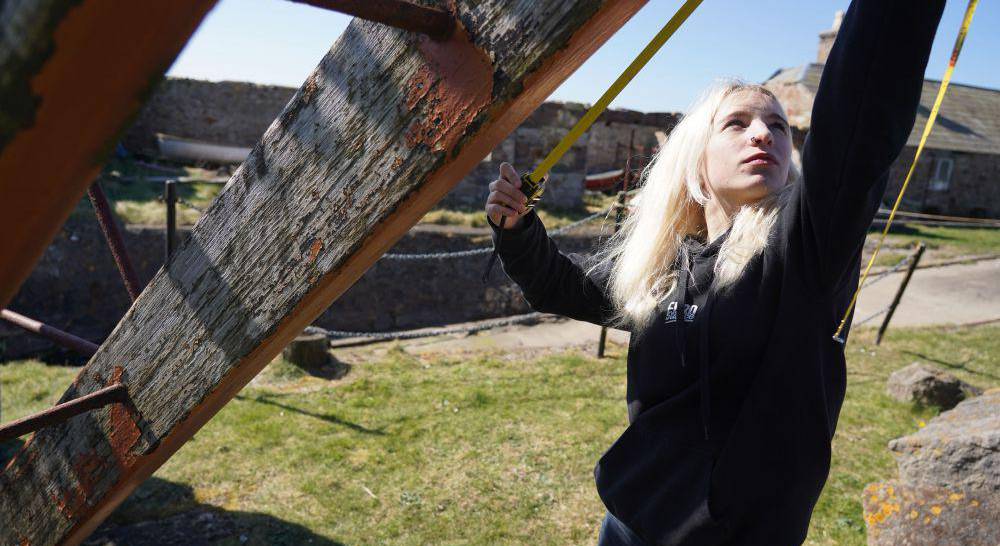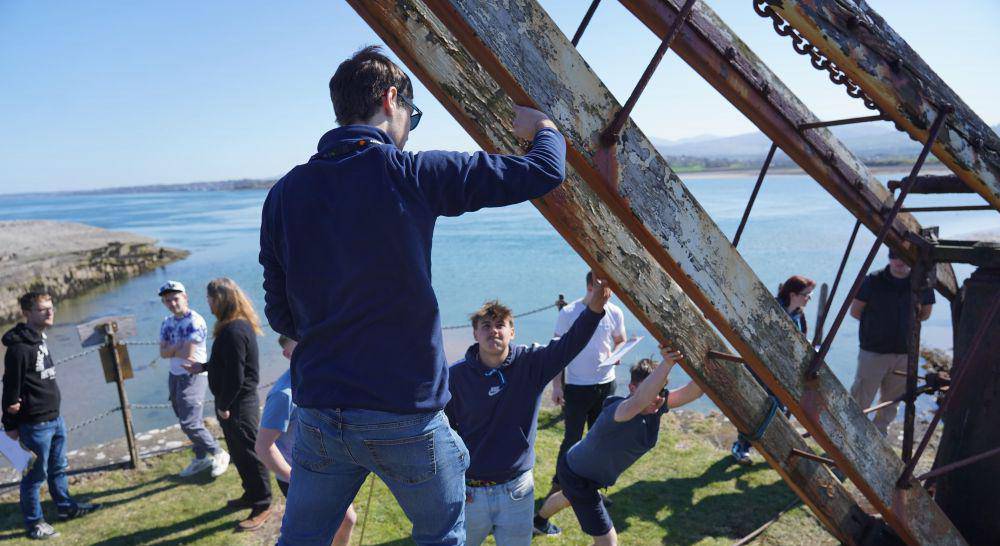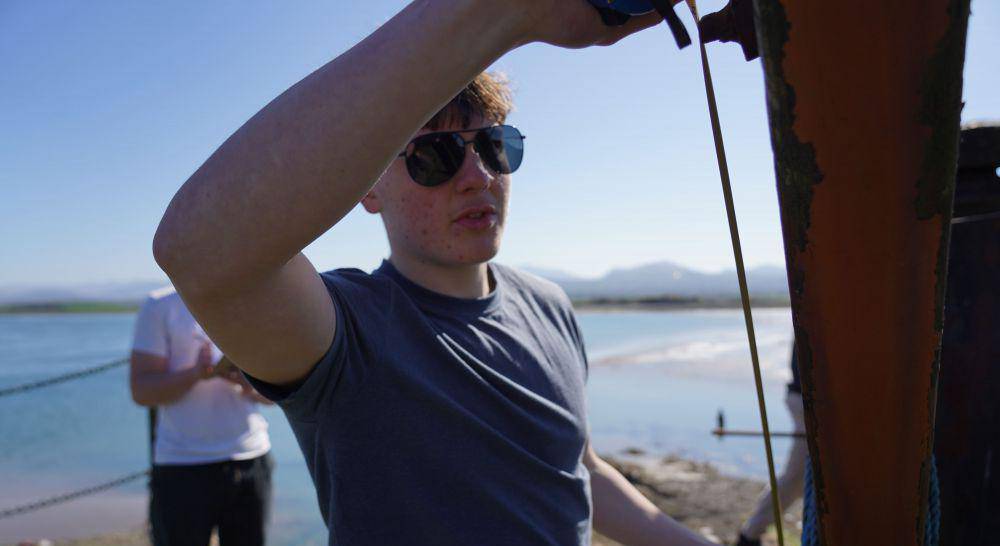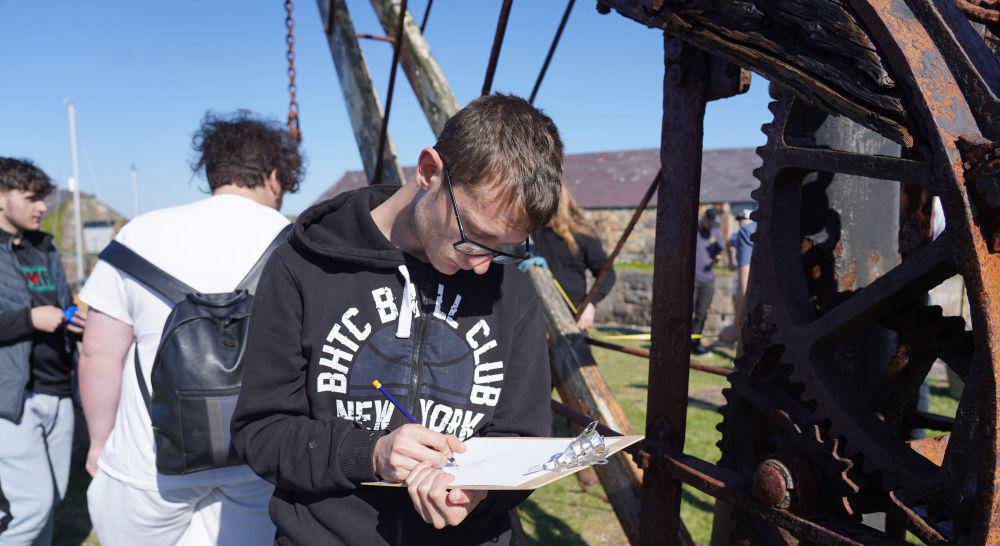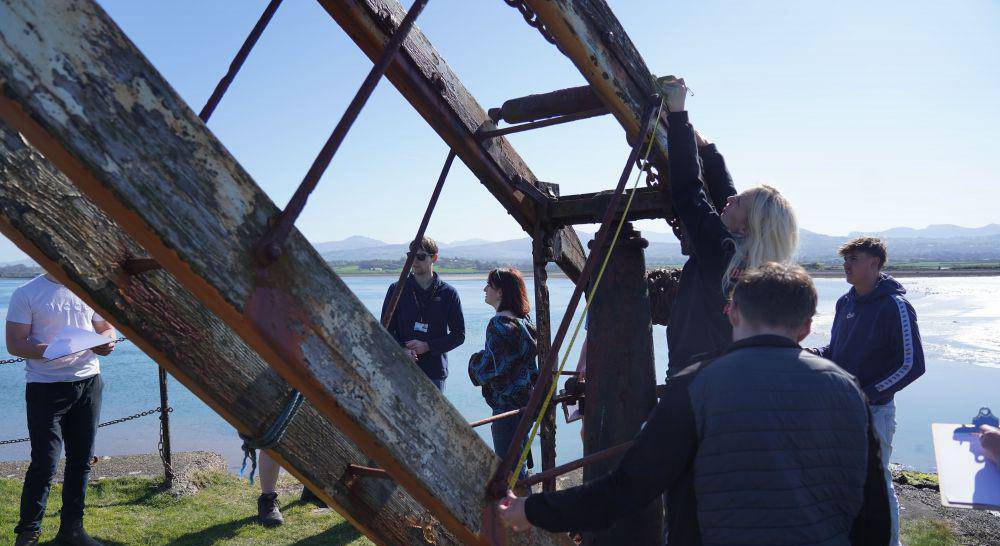Marine engineering students to restore Caer Belan cranes
Learners from Coleg Meirion-Dwyfor’s Pwllheli campus visited the historic Pen Llŷn fortress to take measurements ready for a major renovation project
Coleg Meirion-Dwyfor students have begun a major two-year project to restore Georgian cranes at historic fortress Caer Belan.
Learners studying Marine Engineering in Pwllheli will use 21st-Century design techniques to aid the refurbishment of two cranes which have stood at the fort’s dock since the early 1800s.
Along with lecturer Ellis Morey, the students visited the site near Dinas Dinlle, Pen Llŷn recently to take measurements and make technical drawings of the cranes, which they will use to create computer-aided design (CAD) blueprints.
This summer, staff and students will transport one of the cranes to the Hafan campus in Pwllheli, where they will restore it to its original glory before beginning work on the second crane.
Caer Belan was built in 1775 by Thomas Wynn, later to become Lord Newborough, who was worried about potential attacks to Britain’s coastline amid the American War of Independence. During the Second World War it was used as a base for the Home Guard and for rescue launches.
The Grade-I listed site is undergoing various renovation works, and last summer the fort’s owners approached the college to work with Friends of Belan Association.
Ellis said: “They contacted us to ask if we’d be interested in our learners doing some work with them, as we teach Marine Engineering in Pwllheli.
“Phil Masterson (workshop supervisor) and myself went for a meeting with Jean and her son Chris, who own the fort and run the Friends of Fort Belan. They took us for a tour of the fortress and gave us a bit of the history.
“Over the year we’ve been working with them, and we’ve had meetings with the Gwynedd Conservation officer who looks after the listed properties. They’ve given advice on how to proceed, and what needs to be done from an engineering point of view.
“It’s going to be a two-year project, and in return Fort Belan are going to let us use their forge to teach the learners about hot working. It’s a place for the students to learn outside of the classroom in a real-world situation, and we’re hoping to work together more in the future.”
Ellis said the students enjoyed visiting the site to begin planning the project, and are enthusiastic about the work ahead.
“They all got stuck into doing the drawing and measuring, working in groups,” he said. “When I told them they were going to make CAD drawings they became very keen to do the drawings as well as they possibly could!”
Explaining the work students will undertake, he added: “After taking apart the crane, they will then start cleaning the rust off the metal posts and start fixing or replacing them, which may include making bespoke metalwork from scratch.
“The learners will also be remaking the wooden jibs that have rotten. Then they will start reassembling the crane and painting all the components to restore it aesthetically.
“They’re learning all about the dock side of the marine industry, and they’re doing metalworking as part of their Performing Engineering Operations unit, so this project ties in well with that, and it will also form part of the assessment for their painting qualification.”
This year’s Level 2 learners will continue with the project as they move into Level 3 after the summer, while next September’s intake will take over from next summer onwards.
To learn more about studying Marine Engineering with Grŵp Llandrillo Menai, or to apply, click here.
